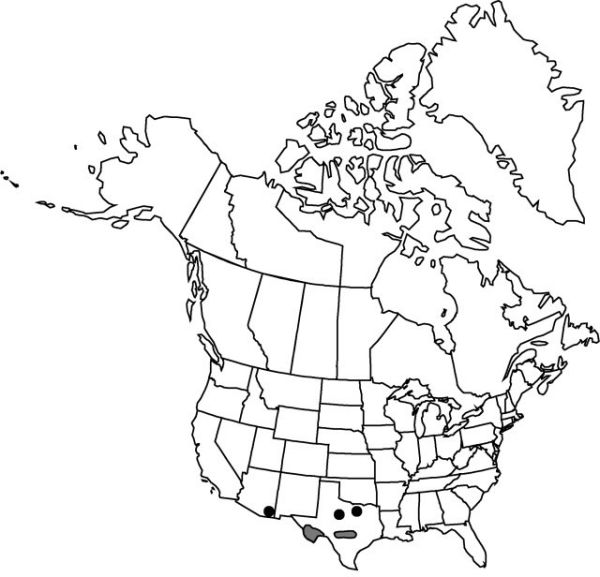Hexalectris warnockii
Bot. Mus. Leafl. 11: 8, plate 2. 1943.
Stems dark red-purple, 15–40 cm; sheathing bracts 2–4. Inflorescences: floral bracts lanceolate to ovate, 3–9 × 2–4 mm, apex acute. Flowers 3–10, pedicellate, chasmogamous; sepals and petals spreading, not recurved, dark purple to maroon; dorsal sepal linear-oblong, 12–19 × 2–4 mm; lateral sepals linearlanceolate, falcate, 12–18 × 2.5–4.5 mm; petals oblanceolate to narrowly obovate, falcate, 12–20 × 1.5–3.8 mm, apex obtuse to acute; lip ovate to ovate-cuneate, deeply 3-lobed, 12–18 × 9–16 mm, margins maroon, centrally white with purple or maroon veins, middle lobe white, rectangular to obcordate, 4–6 × 6–11 mm, margins undulate, lateral lobes incurved, obtuse to broadly rounded, at least 1/2 length of middle lobe, 5 × 5 mm, margins entire or nearly so; lamellae 5, undulate, yellow-margined, prominent; column whitish, 9–12 mm; anthers red to maroon. Capsules 15 × 5 mm.
Phenology: Flowering Jun–Sep.
Habitat: Shaded slopes and dry, rocky creek beds in canyons, in leaf mold in oak-juniper-pinyon pine woodlands
Elevation: 0–400 m (c Tex.), 600–2000 m (west)
Distribution

Ariz., Tex., Mexico (Baja California Sur)
Discussion
Of conservation concern.
Hexalectris warnockii grows in the Chiricahua Mountains of Arizona and in the Davis and Chisos mountains, the Edwards Plateau, and the Dallas area of Texas.
Selected References
None.
Lower Taxa
"/2lengthofmiddlelobe" is not declared as a valid unit of measurement for this property.
